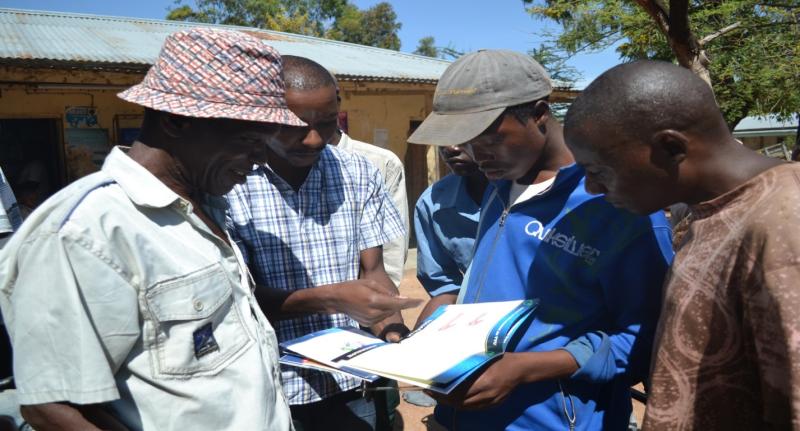Where We Work
See our interactive map


A group of men listen to an influential community leader talk about voluntary medical male circumcision in Simiyu region. Photo by Mkama Mwijarubi for IntraHealth International.
Community leaders are key to reaching men with voluntary medical male circumcision services.
One afternoon in Masanwa village, in Tanzania’s Simiyu region, an old man showed up at the outreach clinic, seeking care for a wound.
The facility he came to mainly provides voluntary male medical circumcision (VMMC), which helps prevent the spread of HIV. His wound was unrelated to the facility’s usual services, but the VMMC technical advisor on duty struck up a conversation with him about male circumcision services in the village, with the hope of identifying potential new clients.
The man had lived in this community for seventy-plus years, and had a deep knowledge of the culture and population in his village and the surrounding neighborhoods. So he offered the health workers a very useful piece of advice:
“We [in the village] know each other very well,” he said. “We have common values and interests that unite and bring us together as men. It is through that closeness that we share information and confide in each other about our wives, children, and what happens in our families and private lives. Find a way to use influential peers in the village—they will tell you who is circumcised and who is not.”
We work with community-owned resources and persons such as council multisectoral HIV/AIDS coordinators, ward executive officers, village executive officers, street and hamlet leaders, religious and traditional leaders, and prominent adult peer networks.
The old man’s advice inspired new strategies for the health workers to reach more potential VMMC clients.
For the past six years, IntraHealth International, with funding from the US President’s Emergency Plan for AIDS Relief (PEPFAR) through the Centers for Disease Control and Prevention (CDC), has used community-driven planning and demand-creation approaches like this to put those most in need at the center of the initiative. As a result of these approaches, we’ve provided services through 32 static sites and more than 300 outreach campaigns, reaching a total of 807,197 clients since 2011.
This accounts for almost 40% of PEPFAR’s VMMC program achievements in Tanzania.
Each year IntraHealth organizes joint planning meetings and collaborates with community leaders to implement demand-creation activities. We work with community-owned resources and persons such as council multisectoral HIV/AIDS coordinators, ward executive officers, village executive officers, street and hamlet leaders, religious and traditional leaders, and prominent adult peer networks.
By engaging these community structures, IntraHealth:
By incorporating community-driven demand creation and service delivery approaches, uptake of VMMC services among adult men has risen from 63% in 2011 to 67% in 2017. Using these approaches, the cost per circumcision has remained low—US$32 in 2017—and in 2017 alone we’ve provided services to 225,093 clients with a US$7.1 million budget.
Community-driven planning and demand-creation approaches that work within existing community structures provide a platform for integrating HIV-prevention services that have high-impact results. These successes in Tanzania demonstrate that VMMC and other HIV-prevention programs can leverage these approaches to reach last-mile clients—and ultimately achieve sustainable HIV epidemic control.
Get the latest updates from the blog and eNews




